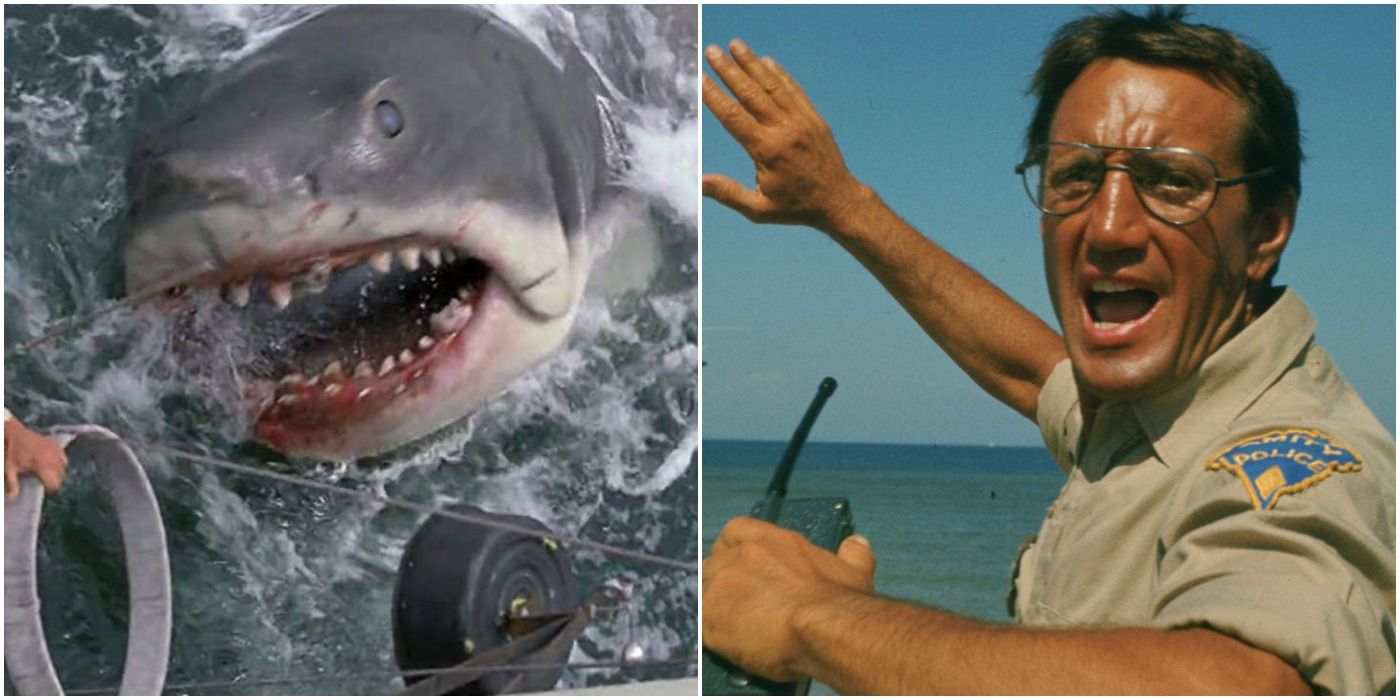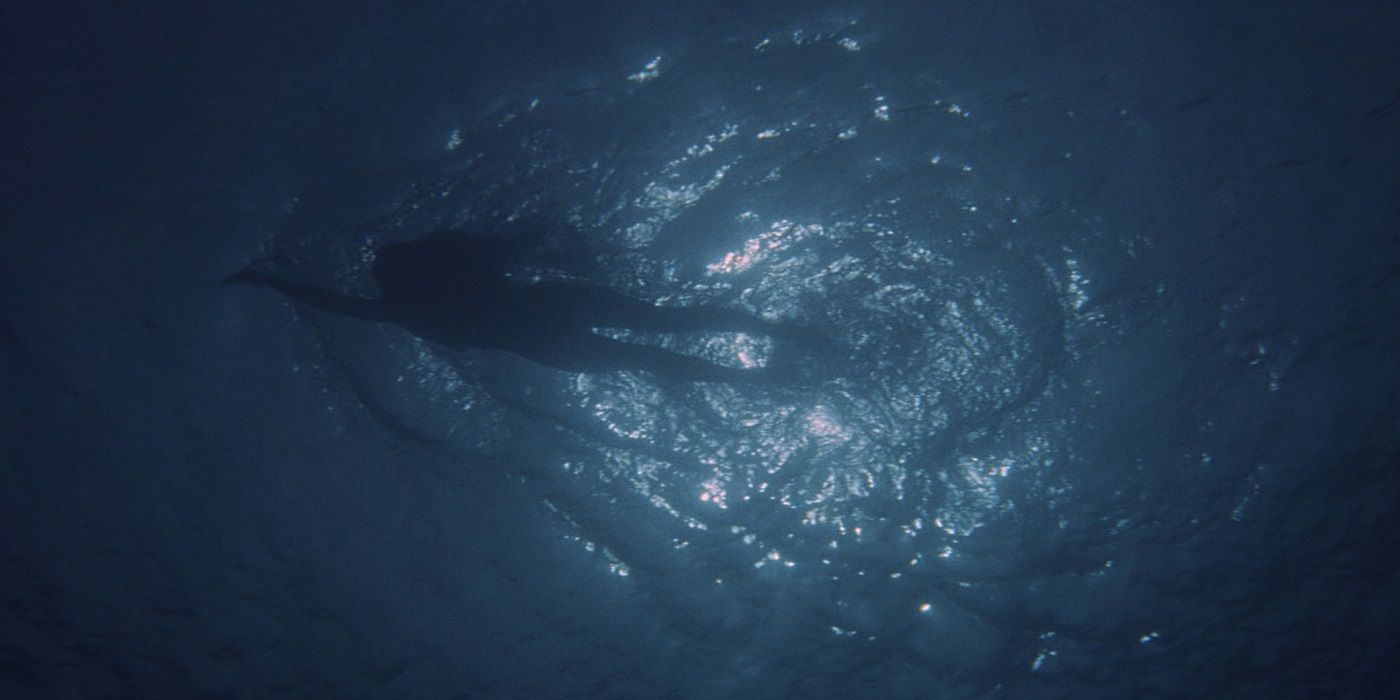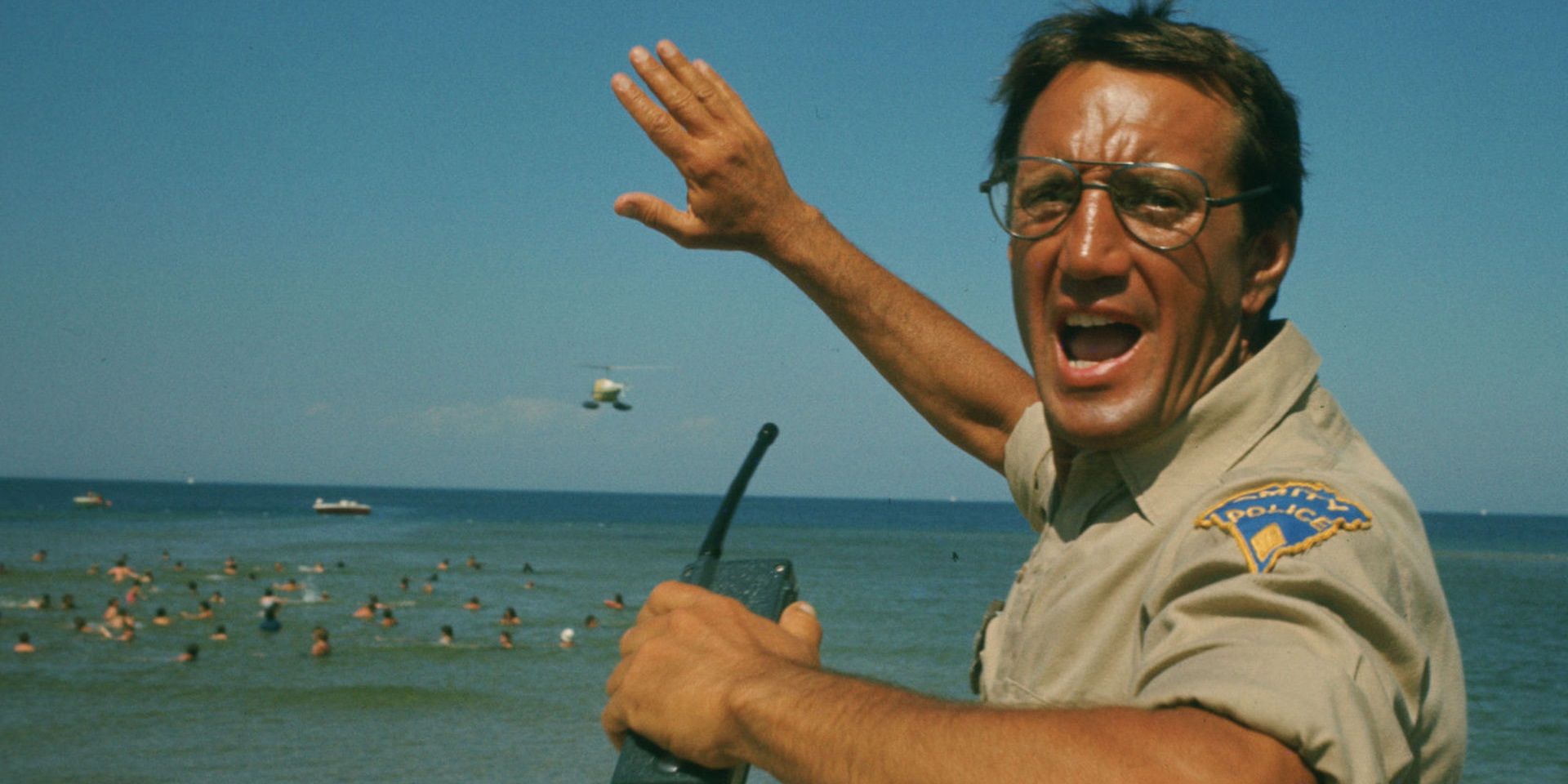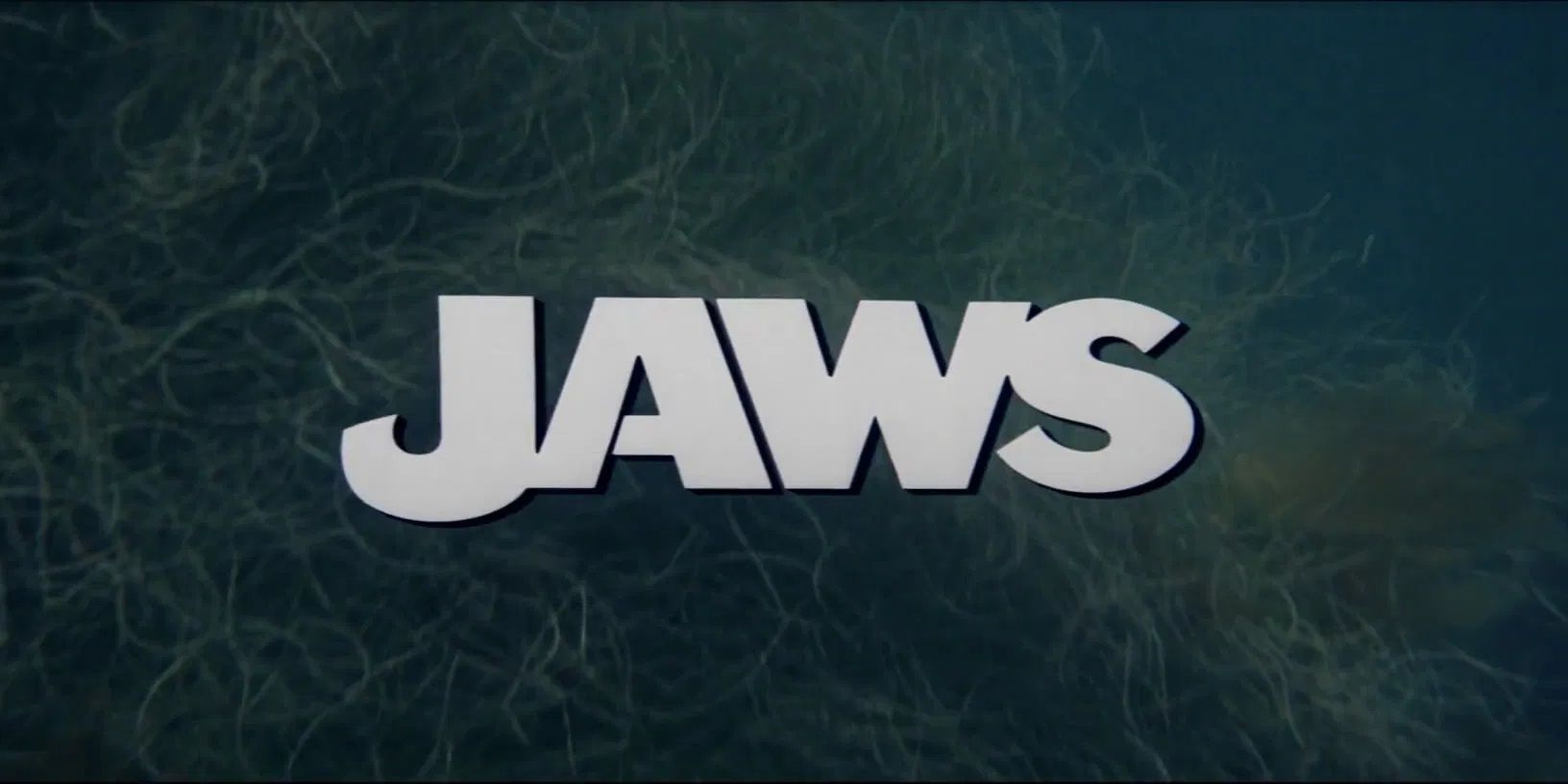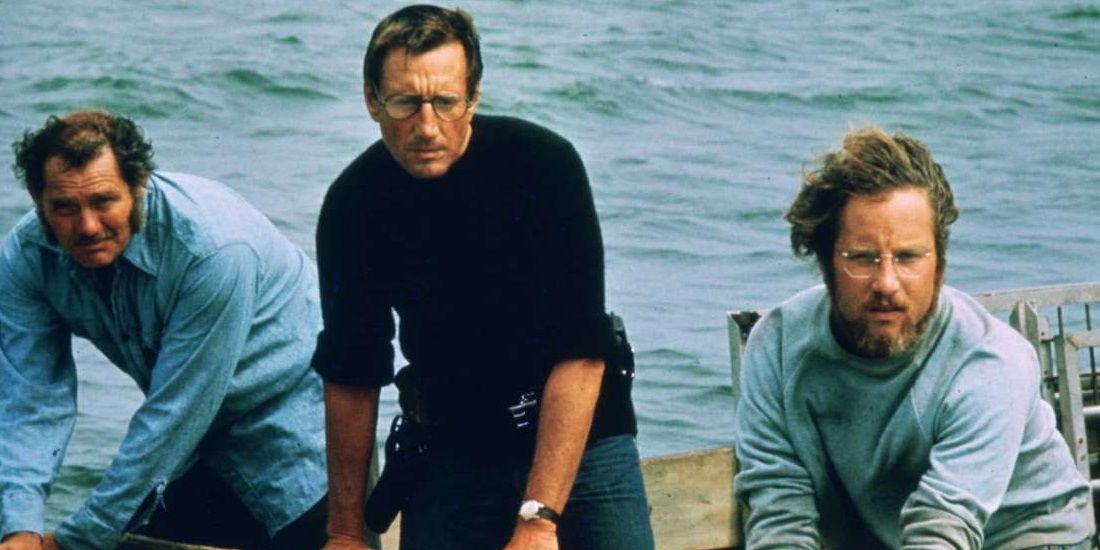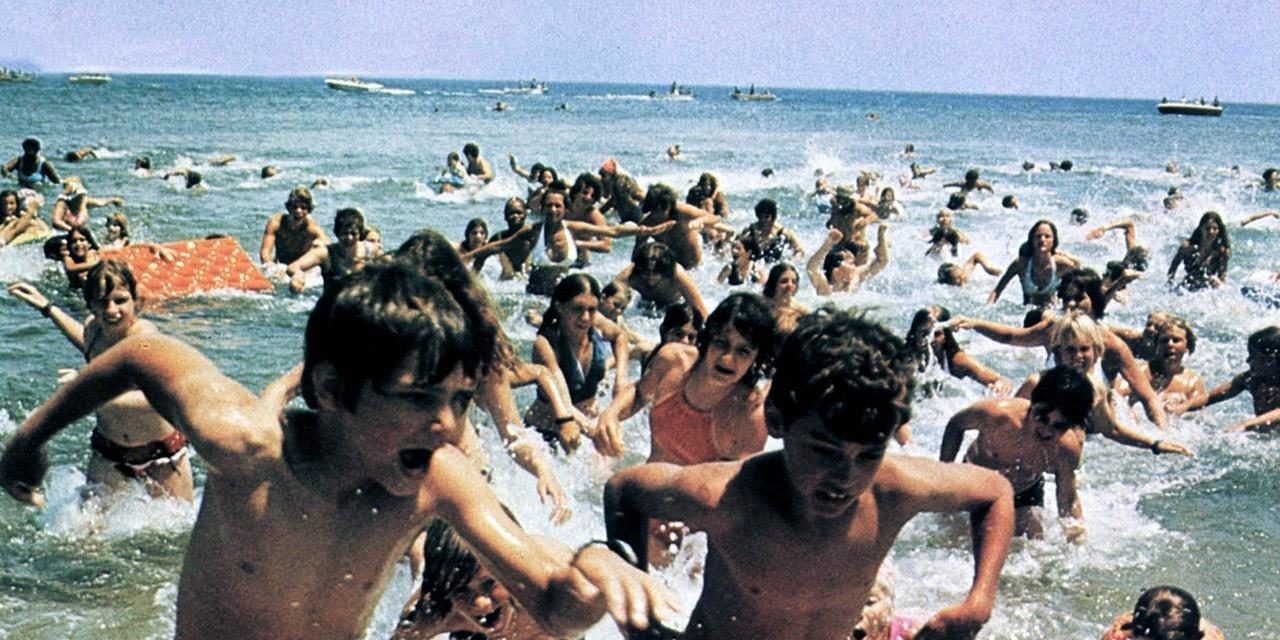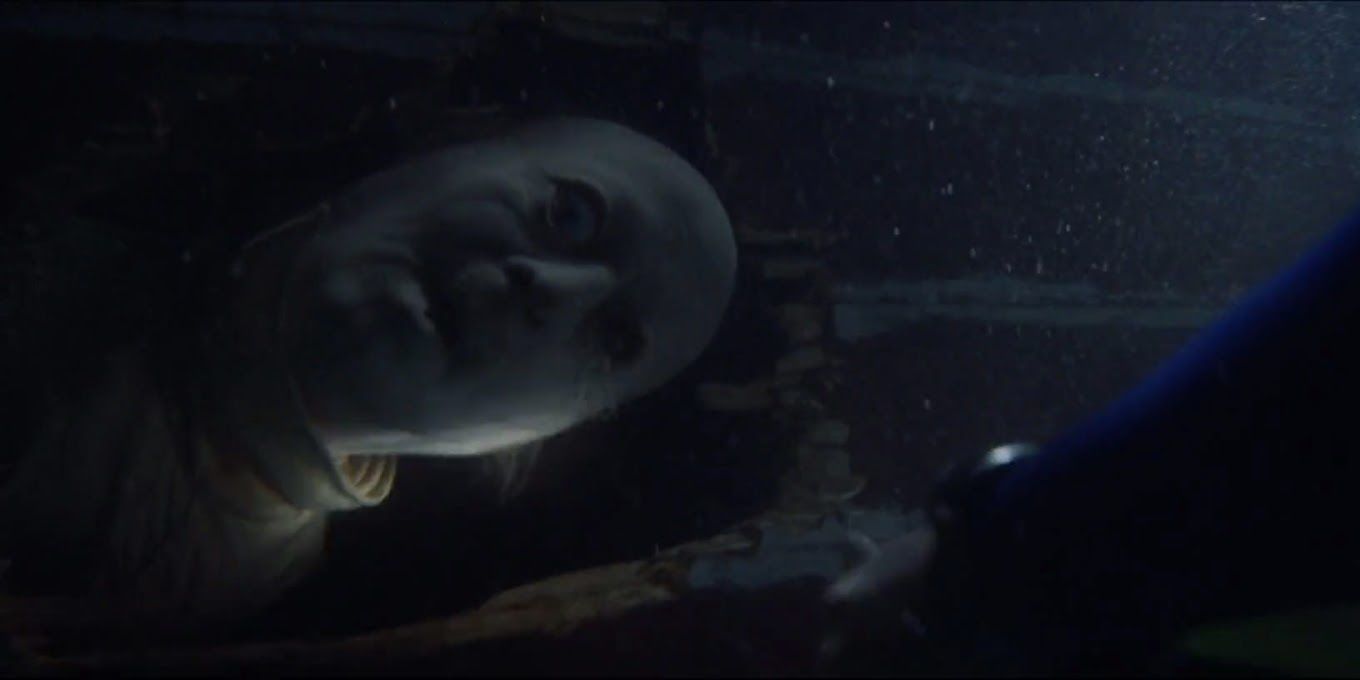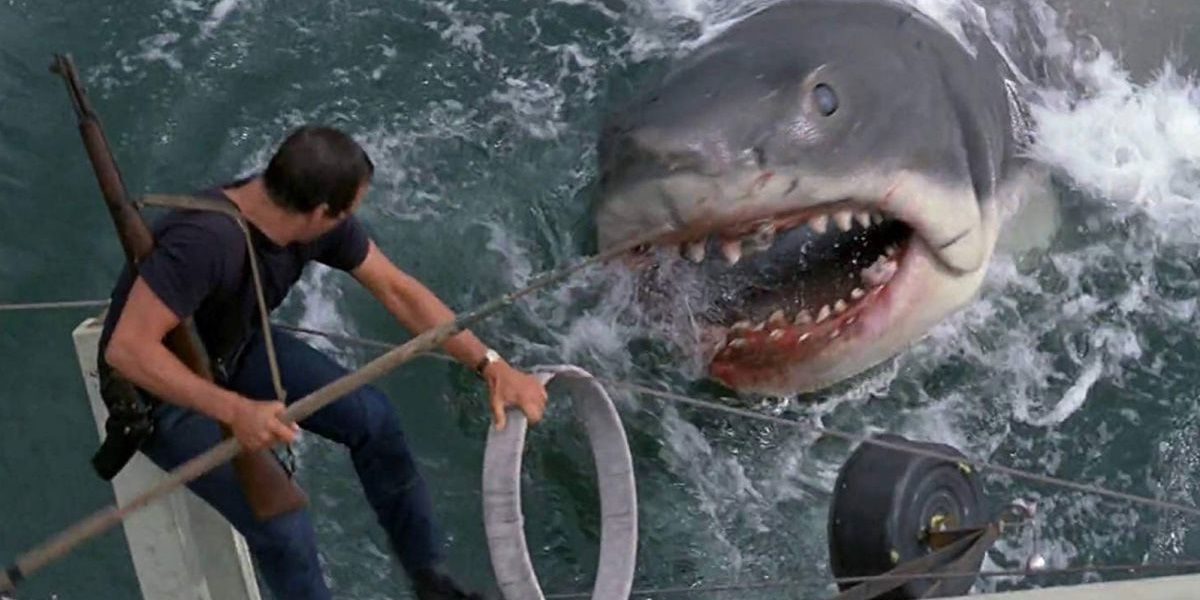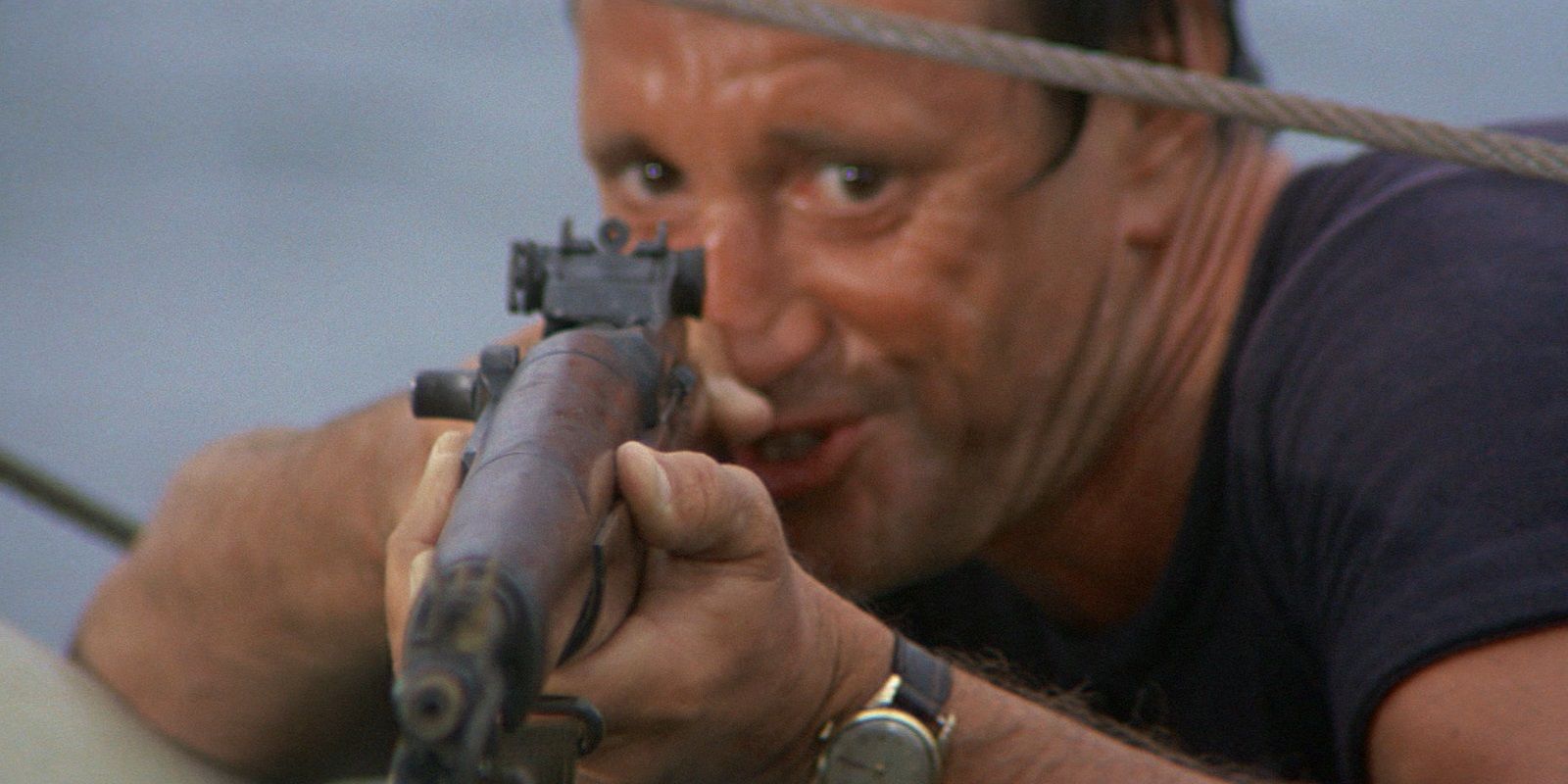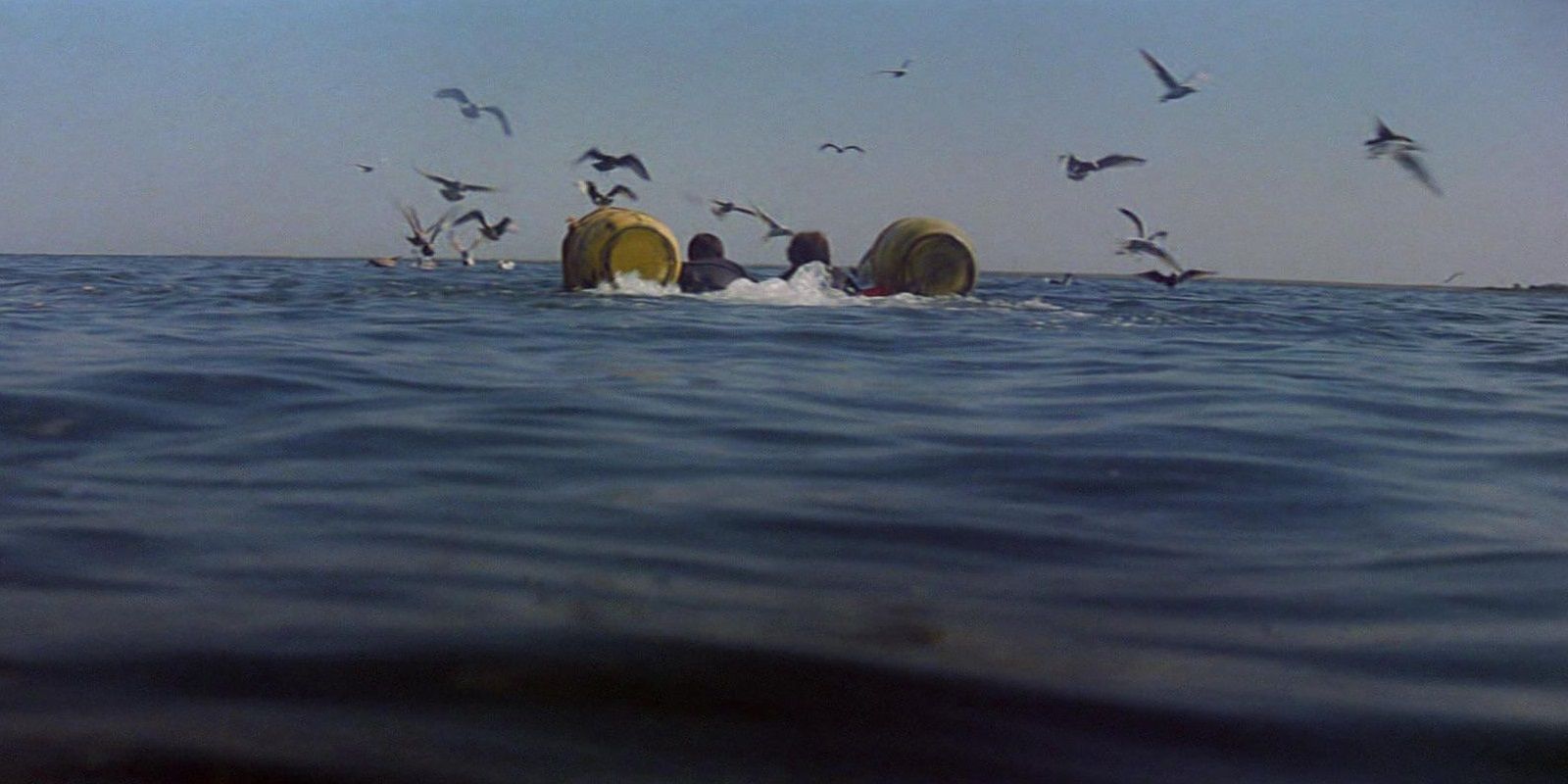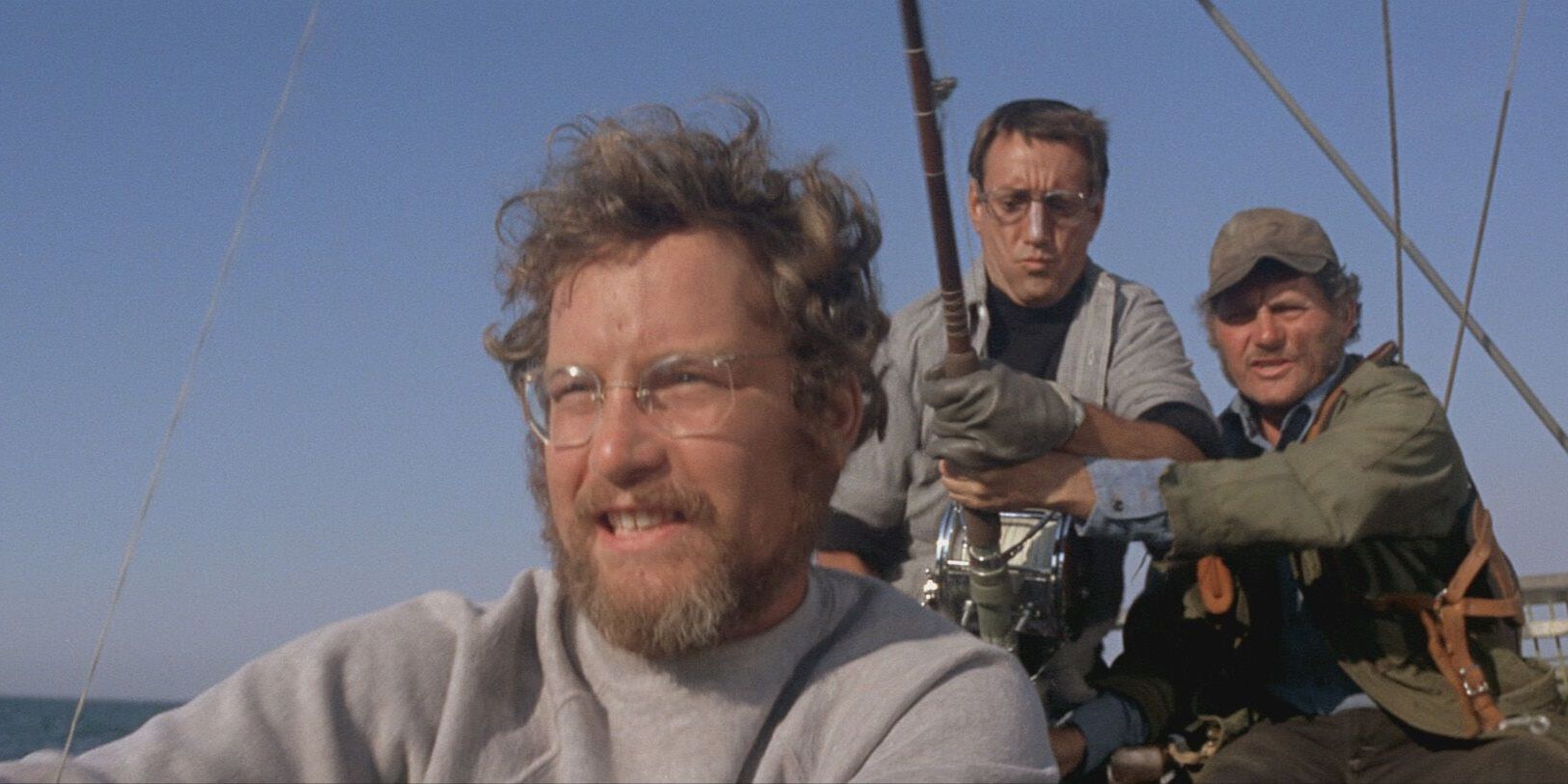In the summer of 1975, a little shark movie that had been marred by production delays and technical difficulties finally made it into theaters and, against all odds, went on to become the highest-grossing movie of all time. Jaws had audiences lining up around the block for the first time in the history of cinema, hence the coinage of the term “blockbuster.”
Widely regarded to be the first summer blockbuster, Jaws changed the way Hollywood studios worked. The edgier tone of the New Hollywood movement was gradually phased out as high-concept B-movies like Jaws took precedence. Spielberg’s masterful thriller set trends that continue to this day.
High-Concept Premise
The beauty of Jaws is its high-concept premise. Unlike a lofty, artistic, thought-provoking project like Eraserhead or Solaris, which would take a while to explain, Jaws can be pitched in an elevator: “A peaceful seaside town is terrorized by a 25-foot great white shark.” The filmmaking craft in Jaws is tantamount to Hitchcock, but it’s essentially a monster movie.
These high-concept premises have continued to dominate Hollywood: “A team of superheroes tries to fend off a cosmic warlord who wants to halve the population,” “NASA recruits a bunch of drillers to save Earth from an asteroid,” “Two star-crossed lovers meet on the maiden voyage of the Titanic.”
Everyman Protagonist
The point of blockbusters is to reach as many moviegoers as possible, and the quickest way to do this is to give them an everyman protagonist they can relate to. Chief Brody is the quintessential everyman. He’s the chief of police, but in a sleepy, mostly crimefree seaside town. He also has relatable flaws as he’s struggling to settle into his new home and he’s scared to go in the ocean.
Die Hard’s John McClane, Interstellar’s Cooper, Mad Max’s Max Rockatansky, Avatar’s Jake Sully, and countless other everyman protagonists owe a debt to Brody’s groundbreaking universality.
Hummable Theme Tune
John Williams’ musical score for Jaws is one of the most iconic in film history, and it set the stage for a lifelong collaboration with Spielberg that would result in some of the greatest film scores ever produced. When Williams first presented his simplistic two-tone theme tune for Jaws to Spielberg, Spielberg thought he was joking. But that theme has since become synonymous with the fear of an advancing bloodthirsty predator.
The key to a memorable blockbuster score is a hummable theme tune. Williams would since repeat this with Star Wars, Indiana Jones, and Jurassic Park, while his influence can be seen in Howard Shore’s Lord of the Rings theme and Alan Silvestri’s Back to the Future theme.
Putting Together A Team
Brody knows he can’t take on the shark alone, so he assembles a crack team consisting of marine biologist Matt Hooper and seasoned shark hunter Quint, and the movie ultimately becomes more about the trio’s ever-changing dynamic than the shark they’re after.
It’s crazy how many major blockbusters revolve around assembling a team to achieve a common goal: The Avengers, The Lord of the Rings, The Hobbit, Inception, Mission: Impossible, Star Trek, Armageddon, Ocean’s Eleven, Suicide Squad, Fast & Furious – the list goes on.
Big Set Pieces
The screenplay for Jaws is constructed around various big set pieces: the opening shark attack, finding Ben Gardner’s corpse, the panic at the beach, harpooning the shark with buoys, the cage melee, the final explosion — big, spectacular moments that bring the house down.
Blockbusters have continued to revolve around big set pieces, like Captain America: Civil War’s airport battle, The Dark Knight’s hospital explosion, and Tom Cruise’s increasingly insane stunts in the Mission: Impossible movies.
Terror For The Whole Family
Since there’s minimal gore in Jaws, it managed to get a PG rating from the MPAA, but thanks to Spielberg’s Hitchcockian suspense-building techniques, it’s still terrifying. This set the trend for blockbusters to provide the thrills of horror cinema, but in a family-friendly way.
Spielberg himself would come back to this well more than anyone, with scenes like the face-melting in Raiders and the raptors in the kitchen in Jurassic Park, but it can also be seen in Gremlins, The Empire Strikes Back, and the Toy Story franchise.
Action-Packed Finale
Brody’s quest to rid Amity Island of its 25-foot nuisance culminates in an action-packed finale in which the shark attacks Hooper, tears into the Orca, and kills Quint. The boat starts to go down and Brody has to think fast. He jams an air canister into the shark’s mouth, then lines up a shot with his rifle and blows the shark to kingdom come, ending its reign of terror (and unwittingly stigmatizing a majestic creature for generations to come).
The spectacle of the action-packed finale has carried through the modern blockbusters. Every movie in the MCU culminates in a large-scale final battle. The Death Star kills everyone at the end of Rogue One. The Dark Knight Rises’ final act pays homage to the French Revolution on the terror-ravaged streets of Gotham.
Quippy One-Liner Signoff
When Brody kills the shark, he signs off with a quippy one-liner. Before pulling the trigger, he says, “Smile, you son of a...” and then fires on “b**ch” because Jaws went for a PG rating and (somehow) managed to get one.
Brody’s snappy signoff has paved the way for many blockbuster heroes to hit their enemies with a one-liner before delivering the final death blow: “I am Iron Man,” “I am all the Jedi,” “You’re terminated, f**ker!” etc.
Happy Ending
While a lot of his New Hollywood contemporaries were ending their movies ambiguously in the ‘70s, like the pseudo-dream sequence that punctuates Scorsese’s Taxi Driver, Spielberg ended Jaws on a decidedly happy note. Not only has Brody killed the shark; he’s conquered his fears, too. As he paddles back to land, Brody is the happiest we’ve ever seen him.
With the exception of franchise entries setting up their next chapter with a downer ending like The Empire Strikes Back or Avengers: Infinity War, post-Jaws blockbusters have usually ended on a hopeful note.
Summer Release
Ultimately, Jaws’ biggest contribution to the film industry was proving how lucrative the summer release window could be. Jaws is a summer blockbuster in every sense: it was released in summer, it takes place during the summer, and summer vacations are a central plot point.
Now, the movie release schedule follows very specific trends: studios bombard audiences with big-budget blockbusters in the summer (and some around the holiday season), then roll out the awards hopefuls in the fall. The outliers get dotted around the spring as a sort of warmup act for the summer tentpoles.

